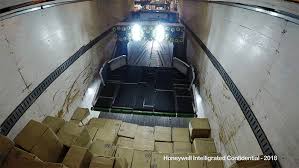
Breaking News
 How To Become Competent, Confident, and Dangerous, with guest Doug Casey
How To Become Competent, Confident, and Dangerous, with guest Doug Casey
 My Hot Take On Bill Gates' Climate Change Essay | Alex Epstein #457 | The Way I Heard It
My Hot Take On Bill Gates' Climate Change Essay | Alex Epstein #457 | The Way I Heard It
 Discussion on Covid Vaccination Should Be Non-Controversial
Discussion on Covid Vaccination Should Be Non-Controversial
Top Tech News
 HUGE 32kWh LiFePO4 DIY Battery w/ 628Ah Cells! 90 Minute Build
HUGE 32kWh LiFePO4 DIY Battery w/ 628Ah Cells! 90 Minute Build
 What Has Bitcoin Become 17 Years After Satoshi Nakamoto Published The Whitepaper?
What Has Bitcoin Become 17 Years After Satoshi Nakamoto Published The Whitepaper?
 Japan just injected artificial blood into a human. No blood type needed. No refrigeration.
Japan just injected artificial blood into a human. No blood type needed. No refrigeration.
 The 6 Best LLM Tools To Run Models Locally
The 6 Best LLM Tools To Run Models Locally
 Testing My First Sodium-Ion Solar Battery
Testing My First Sodium-Ion Solar Battery
 A man once paralyzed from the waist down now stands on his own, not with machines or wires,...
A man once paralyzed from the waist down now stands on his own, not with machines or wires,...
 Review: Thumb-sized thermal camera turns your phone into a smart tool
Review: Thumb-sized thermal camera turns your phone into a smart tool
 Army To Bring Nuclear Microreactors To Its Bases By 2028
Army To Bring Nuclear Microreactors To Its Bases By 2028
 Nissan Says It's On Track For Solid-State Batteries That Double EV Range By 2028
Nissan Says It's On Track For Solid-State Batteries That Double EV Range By 2028
Robots Edge Closer to Unloading Trucks in Amazon-Era Milestone

Robot makers are getting close to solving part of that puzzle.
Siemens AG and Honeywell International Inc. have built machines that pull packages from the back of a tractor-trailer and place them on conveyor belts, whizzing the parcels off for sorting. Making robots that can load trucks is more complicated, although clearing that hurdle isn't far off.
"The biggest challenge in our world is: Every single package is different in size, shape, weight, color, material," said Ted Dengel, managing director of operations technology at FedEx's ground-delivery unit. "It makes it a very tricky problem."
The devices, unveiled at a recent automation conference in Chicago, hold out the promise of increasing productivity while reducing the need for one of the most grueling jobs in logistics. Couriers are relying on automation to grapple with the rise of online shopping, which is fueling record demand but pressuring profit margins. Amazon's plan to handle more of its own shipping and offer more one-day deliveries is only upping the ante.

 Dark Tidings
Dark Tidings Carbon based computers that run on iron
Carbon based computers that run on iron

